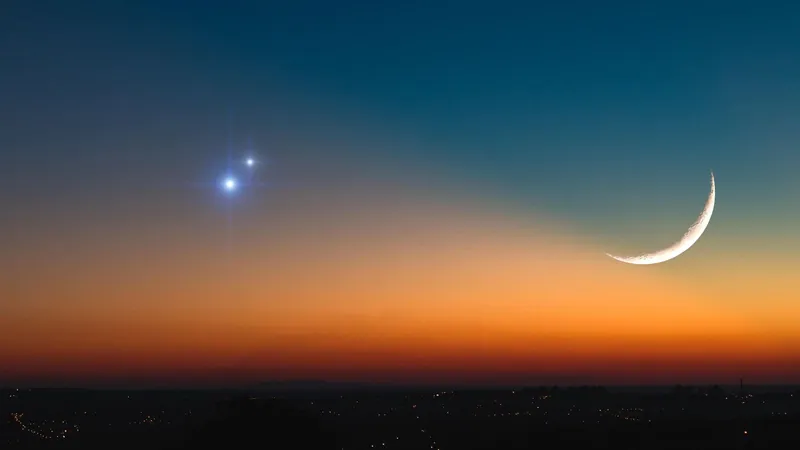
Scientists Unravel the Secrets of Ancient Mammoths Through Frozen DNA!
2025-04-30
Author: Amelia
A Groundbreaking Discovery in Mammoth Genetics
In a fascinating genomic breakthrough, researchers have uncovered a treasure trove of genetic diversity among ancient mammoth lineages, using DNA samples that date back an astounding 1.3 million years! This revelation offers a new perspective on how the demographic changes of the Ice Age influenced these majestic giants.
Unlocking a Million Years of Evolution
By sequencing 34 new mitochondrial genomes from mammoth specimens—including 11 from the Early and Middle Pleistocene periods—scientists have dramatically expanded our understanding of ancient mammoth evolution. These profound insights extend far beyond the typical 100,000-year genetic cutoff, diving deep into a rich history of biodiversity.
Dr. J. Camilo Chacón-Duque from Stockholm University emphasized the significance of this research, stating, "Our analyses provide an unprecedented glimpse into how major demographic events shaped the genetic diversity of mammoths over time." Historically, the exploration of biodiversity across the last 2.5 million years has been limited due to the lack of ancient genetic data.
Ancient Siberian Origins and Lineage Transformations
The team found that the 34 newly sequenced mitogenomes, when combined with over 200 previously published genomes, affirm an early Siberian origin for major mammoth lineages. Notably, these diversification events correspond with significant demographic changes recorded during the Early and Middle Pleistocene epochs.
Dr. Jessica A. Thomas Thorpe remarked, "Mitogenomes have been somewhat overlooked due to the decreasing costs of sequencing. However, our study highlights their importance in evolutionary biology, as they are more plentiful than nuclear DNA and vital for understanding mammoth evolution." The team also noted links between population dynamics and climate shifts during the Ice Age.
Revolutionizing Ancient DNA Research Methodologies
In addition to groundbreaking findings, researchers improved techniques for ancient DNA studies, creating a new molecular clock dating framework that enables more precise age estimations for specimens beyond the limits of traditional radiocarbon dating.
Professor Love Dalén from Stockholm University celebrated the advancements, stating, "I’m thrilled that we now have genetic data from many more mammoth specimens over the last million years, allowing us to track how mammoth diversity has evolved through time." One striking highlight was the discovery of the oldest known mammoth DNA in North America, sourced from a specimen in the Yukon Territory, dating back over 200,000 years!
Unlocking New Opportunities for Species Preservation
This research not only showcases the potential of recovering DNA from specimens over a million years old but also opens new avenues for studying other extinct or endangered species. The implications are profound, suggesting that these long-range genetic studies can offer critical insights into how species have historically adapted to environmental shifts, guiding modern conservation efforts.
Moreover, this study reinforces previous findings regarding the notable genetic differences between ancient mammoths from a million years ago and their more recent descendants, promising exciting revelations for the future of paleogenetics!









 Brasil (PT)
Brasil (PT)
 Canada (EN)
Canada (EN)
 Chile (ES)
Chile (ES)
 Česko (CS)
Česko (CS)
 대한민국 (KO)
대한민국 (KO)
 España (ES)
España (ES)
 France (FR)
France (FR)
 Hong Kong (EN)
Hong Kong (EN)
 Italia (IT)
Italia (IT)
 日本 (JA)
日本 (JA)
 Magyarország (HU)
Magyarország (HU)
 Norge (NO)
Norge (NO)
 Polska (PL)
Polska (PL)
 Schweiz (DE)
Schweiz (DE)
 Singapore (EN)
Singapore (EN)
 Sverige (SV)
Sverige (SV)
 Suomi (FI)
Suomi (FI)
 Türkiye (TR)
Türkiye (TR)
 الإمارات العربية المتحدة (AR)
الإمارات العربية المتحدة (AR)